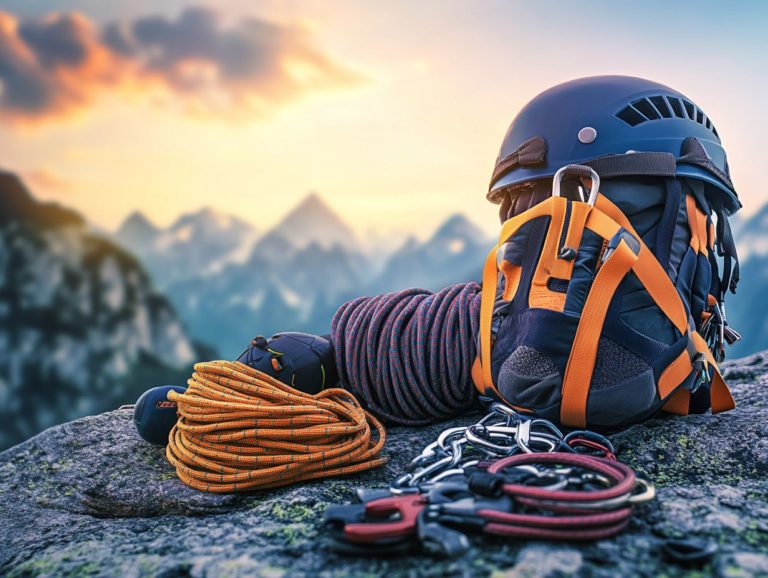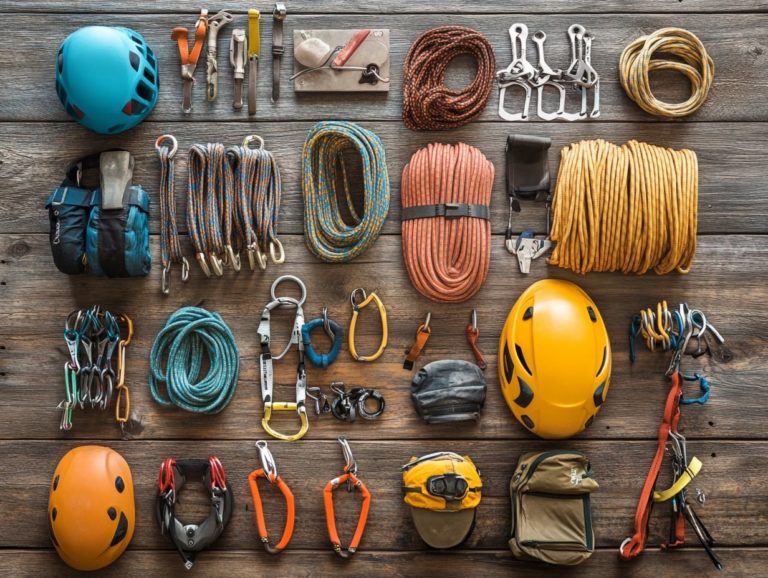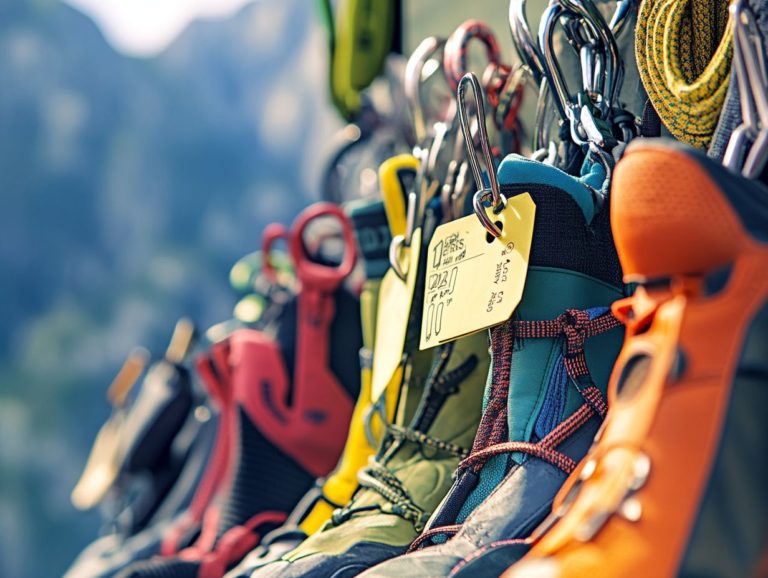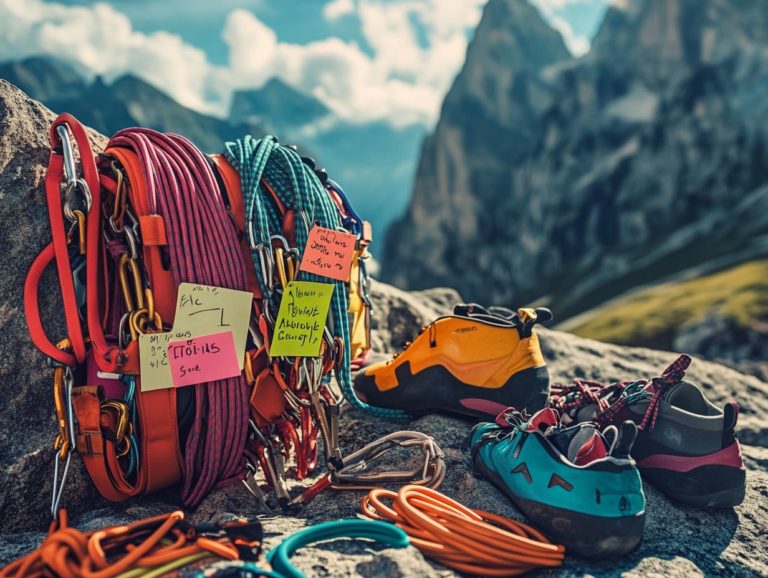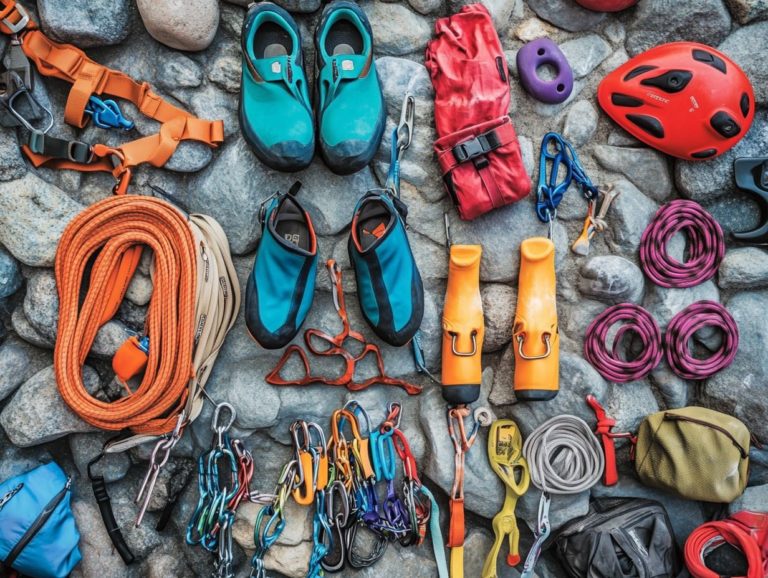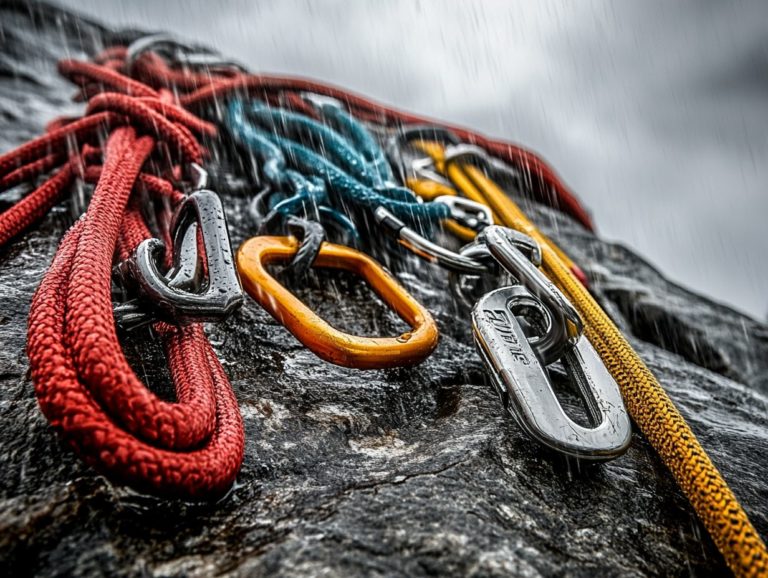Understanding Climbing Gear Weight Limits
When it comes to climbing, safety takes precedence. A crucial aspect of that safety is understanding the weight limits of your gear.
Grasping these limits impacts your performance and can be the deciding factor between a secure ascent and a perilous situation.
This article delves into the significance of weight limits, examines the various types of climbing gear, and discusses the factors that shape these limits.
Join us as we uncover the potential risks of exceeding these limits and empower you to climb with unwavering confidence!
Contents
- Key Takeaways:
- Importance of Knowing Weight Limits
- Types of Climbing Gear with Weight Limits
- Ropes, Harnesses, Carabiners, and More
- Factors That Affect Weight Limits
- How to Find and Understand Weight Limits
- Consequences of Exceeding Weight Limits
- Potential Risks and Damages
- Frequently Asked Questions
- What is the importance of understanding climbing gear weight limits?
- How do I determine the weight limit for my climbing gear?
- Is it okay to exceed the weight limit for my climbing gear?
- What happens if I use climbing gear that is over its weight limit?
- Can climbing gear weight limits differ between brands?
- What should I do if my weight is close to the maximum weight limit for a piece of gear?
Key Takeaways:
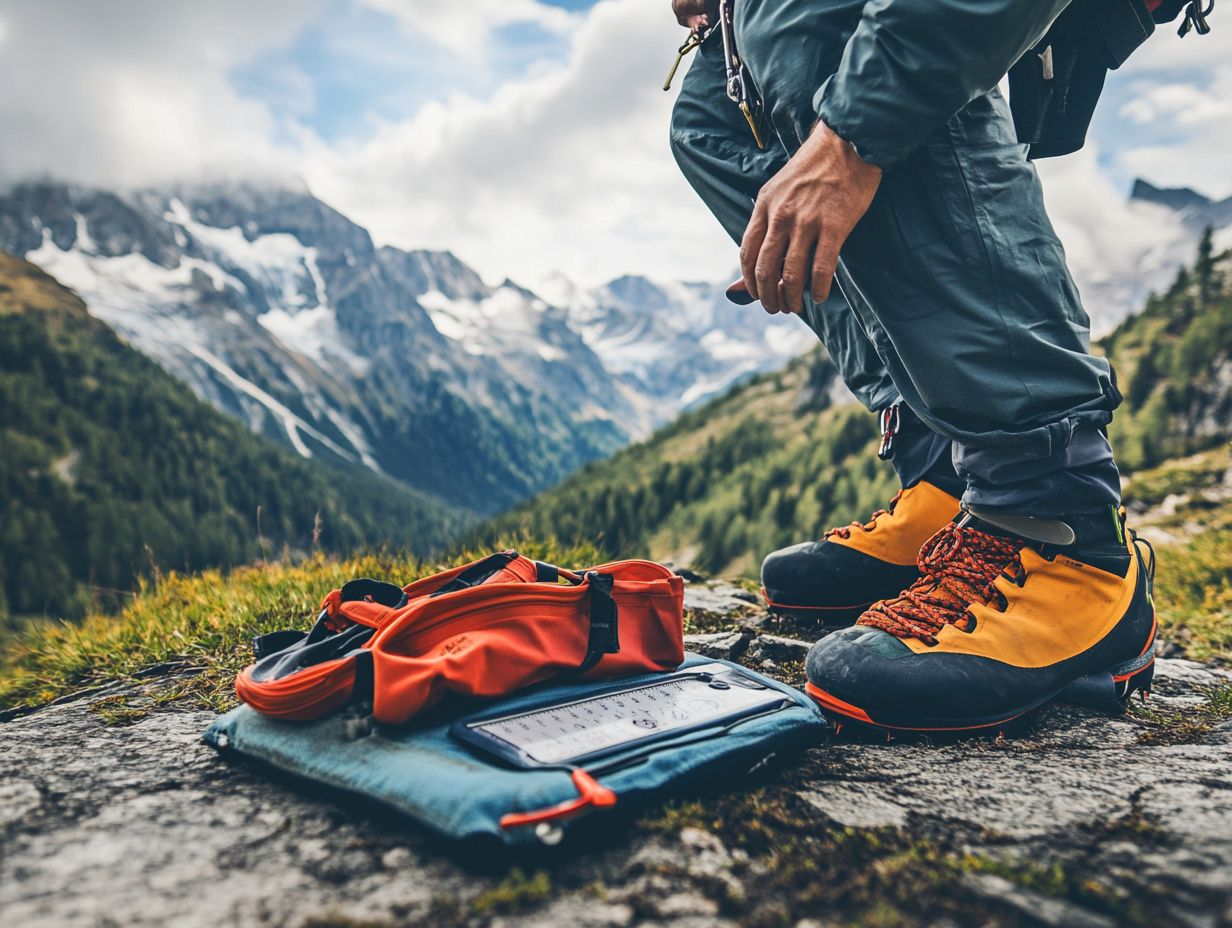
- Knowing climbing gear weight limits is crucial for safety and performance.
- Weight limits vary for different types of gear and are affected by material, design, and usage.
- Exceeding weight limits can result in risks and damages, so always follow manufacturer guidelines and read labels carefully.
What are Climbing Gear Weight Limits?
Understanding the weight limits of your climbing gear is paramount for ensuring both safety and peak performance. These limits apply across various climbing scenarios, whether you’re tackling sport climbing in Boulder or navigating alpine ascents in Maine.
Each piece of equipment ropes, harnesses, carabiners has specific ratings that define the maximum load they can safely handle. This knowledge allows you to confront challenges with confidence without jeopardizing your safety.
It’s important to know about breaking strength, working load limits, and tensile breaking strength (measured in kN) to prevent severe falls and ensure a secure climbing experience.
For you as a climber, adhering to UIAA standards is crucial for enhancing safety. Many local gear shops offer invaluable insights regarding the weight limits of various gear, such as metal carabiners, which typically boast a 20 kN strength rating, or dynamic ropes designed to absorb shock while withstanding falls.
Neglecting recommended weight capacities can lead to catastrophic failures. Therefore, it’s crucial to integrate effective climbing techniques like evenly distributing weight and employing backup systems to maximize safety.
Ultimately, grasping these limitations can profoundly affect your climbing experience, transforming potential risks into manageable challenges that elevate your adventure.
Importance of Knowing Weight Limits
Understanding the weight limits of your climbing gear is essential for your safety and optimal performance on the rock face. It directly influences the risks associated with severe falls and potential injuries, making it a critical aspect of your climbing preparation.
Safety and Performance Considerations
Safety and performance in climbing hinge on your understanding of how weight limits influence the fall factor and the force exerted on the belayer during a fall. The fall factor is a measure of how far a climber falls relative to the length of rope out.
When you and a partner of significantly different weights ascend together, keep in mind that the lighter climber faces greater forces upon falling, which can lead to potential injury. Employing techniques like softer catch methods such as a dynamical belay allows you to absorb some of that force while ensuring your partner’s safety.
The selection of your harness and gear is equally crucial in mitigating the impact of a fall. In sport climbing, where quickdraws come into play, it’s essential that both climbers remain within safe weight limits. This maximizes the effectiveness of your gear and minimizes the risk of disaster.
In traditional climbing, fostering proper communication and understanding between partners enhances safety, allowing you to adapt your techniques based on real-time scenarios and ensuring a secure experience on the rock face.
Types of Climbing Gear with Weight Limits
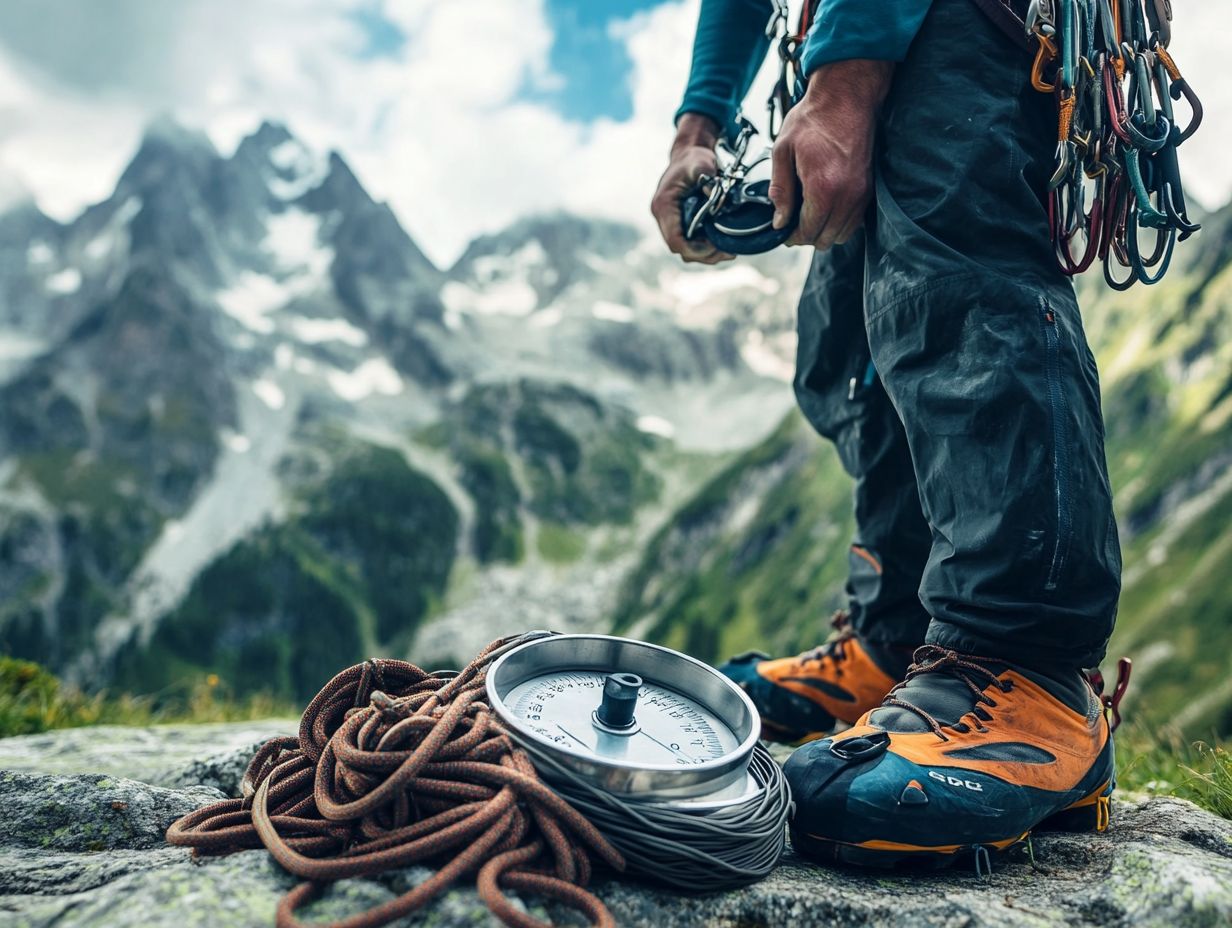
Climbing gear includes a range of essential equipment, each with specific weight limits. This collection features climbing ropes, harnesses, and sturdy metal carabiners, all of which play a vital role in ensuring your climbing experience is not only enjoyable but also safe.
Ropes, Harnesses, Carabiners, and More
Ropes, harnesses, and carabiners are not just accessories; they are the backbone of your climbing gear. Each boasts specific weight limits that are crucial for your safety during climbs.
The connection between these components and your safety cannot be overstated. Every piece undergoes rigorous testing to ensure it meets high standards. For instance, climbing ropes are often dynamic, with an average breaking strength ranging from 20 to 30 kilonewtons. They are classified under UIAA rated standards. The UIAA certification serves as a benchmark for reliability, giving you peace of mind.
Harnesses typically feature a breaking strength of around 15 kilonewtons. This means they can endure significant forces during falls.
Carabiners are impressive in their own right. Those classified as ‘lock’ or ‘oval’ usually have a minimum breaking strength of 20 kilonewtons. Grasping these ratings enables you to select the right gear for your adventures. This makes the critical difference between a safe ascent and a potential disaster while conquering rock faces.
Factors That Affect Weight Limits
Various factors play a crucial role in determining the weight limits of climbing gear. Consider the materials used, the design of the equipment, and the intended usage. Each element significantly contributes to the overall breaking strength and performance.
Understanding these aspects helps you choose gear that meets your climbing needs while prioritizing safety and efficiency.
Material, Design, and Usage
The material, design, and intended usage of climbing equipment are crucial. They determine weight limits and affect the overall safety of your gear.
Take cords, for instance. They come in various thicknesses, like the 6mm and 7mm options. Each offers distinct strength characteristics and flexibility under load. A thinner cord may be lightweight and easy to handle, but its durability can diminish in extreme conditions. This could lead to failures when you need it most. On the flip side, a thicker cord typically offers superior strength, making it a more dependable choice for tackling challenging terrains.
It’s vital to pay attention to these details and practice proper maintenance. Regular inspections for wear and tear ensure your climbing gear not only meets safety standards but also enhances your climbing adventures!
How to Find and Understand Weight Limits
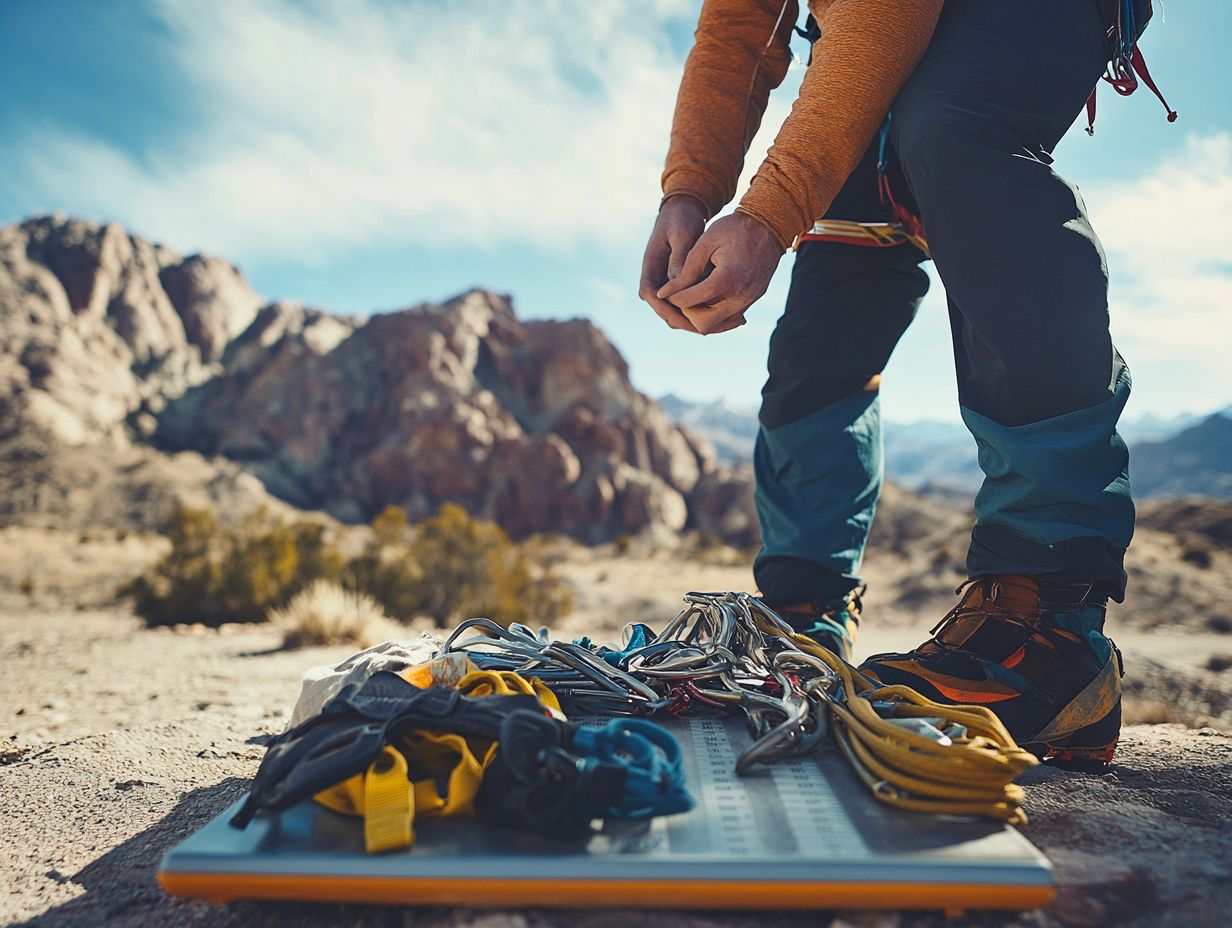
Understanding how to find and interpret weight limits on your climbing gear is crucial for your safety and success as a climber. You will often find this vital information on labels and in the manufacturer s guidelines. These serve as trusted resources for making informed decisions.
Reading Labels and Manufacturer Guidelines
Reading labels and manufacturer guidelines is essential for climbers. This helps you accurately assess the weight limits of your climbing gear and ensures your safety during ascents.
By understanding the specifications outlined on these labels like the breaking strength rating, often expressed in kiloNewtons you can make informed choices about the equipment you decide to take with you. Familiarizing yourself with symbols, such as the UIAA (International Climbing and Mountaineering Federation) certification mark, can significantly enhance your safety. This mark indicates that the gear has met rigorous testing standards.
Engaging with the climbing community can further enrich your understanding. Experienced climbers often share invaluable insights regarding specific gear usage and its performance in real-world conditions, including climbing challenges. Tapping into this collective wisdom can lead to safer, more secure climbing experiences.
Consequences of Exceeding Weight Limits
Exceeding the weight limits of climbing gear can have serious repercussions. It may expose you to potential accidents, gear malfunctions, and dangerous falls. All of these can significantly jeopardize your safety while climbing.
Potential Risks and Damages
Exceeding weight limits in climbing gear poses serious risks. These can lead to severe falls and injuries.
This concern is backed by case studies in the climbing community. For instance, an experienced climber once used a harness rated for a lower weight class during a challenging ascent. When the gear failed, the fall endangered the climber’s life and affected their entire group. Understanding what to know about climbing gear weights is crucial for safety on the rock.
To mitigate these risks, regularly check your gear. Understand the manufacturer’s specifications and adhere to safety protocols. This includes using backup systems, like extra harnesses, and double-checking each other s equipment before you embark on a climb. Checking your gear can ensure your climbing experience is both safe and enjoyable!
Frequently Asked Questions

What is the importance of understanding climbing gear weight limits?
Understanding climbing gear weight limits is crucial for your safety. Each piece of climbing gear has a maximum weight capacity that it can safely support. Exceeding these limits can result in gear failure and serious injury.
How do I determine the weight limit for my climbing gear?
The weight limit for climbing gear is clearly stated by the manufacturer. You can usually find it on the packaging or in the product manual. If you are unsure, contact the manufacturer for clarification.
Is it okay to exceed the weight limit for my climbing gear?
No, it is never okay to exceed the weight limit for your climbing gear. Doing so can compromise the safety of the gear and put you at risk. If you consistently find yourself exceeding weight limits, consider investing in gear designed for your weight range.
What happens if I use climbing gear that is over its weight limit?
If you use climbing gear that is over its weight limit, you risk gear failure. This can result in falls, leading to serious injury or even death. Always ensure you use gear within its designated limit.
Can climbing gear weight limits differ between brands?
Yes, climbing gear weight limits can vary between brands and manufacturers. Always check the designated weight limit for each piece of gear, regardless of the brand. Do not assume all gear has the same limit.
What should I do if my weight is close to the maximum weight limit for a piece of gear?
If your weight is close to the maximum weight limit for a piece of gear, it’s best to choose a different piece with a higher limit. Your safety is the most important factor when it comes to climbing gear weight limits.
Always prioritize your safety before every climb!

